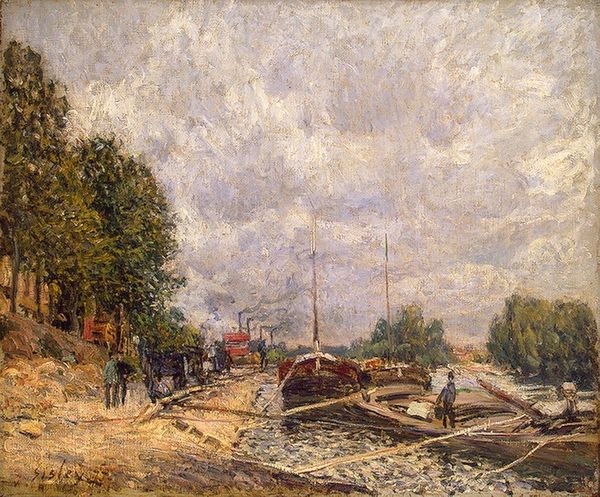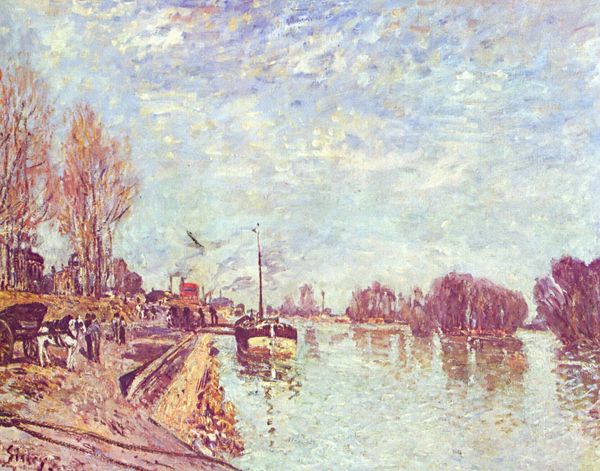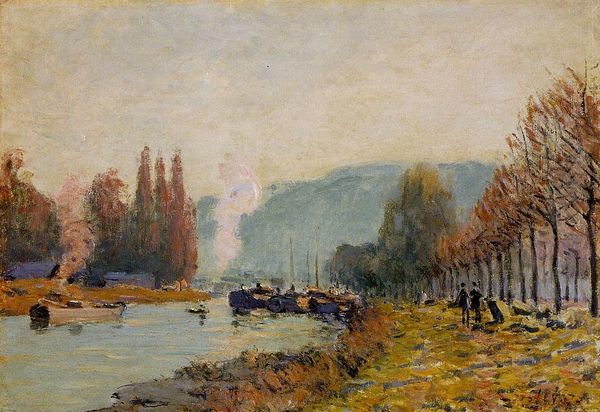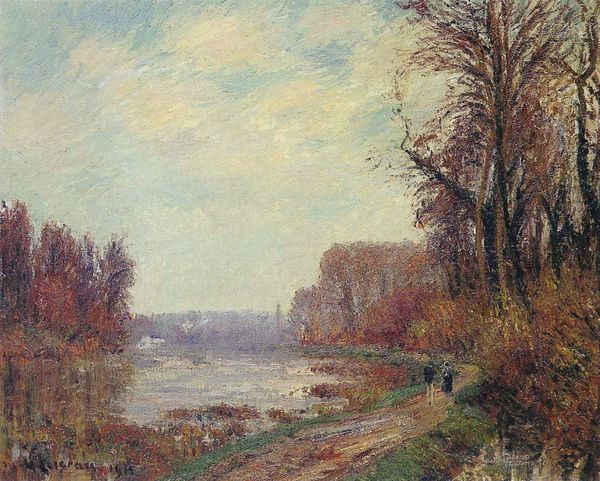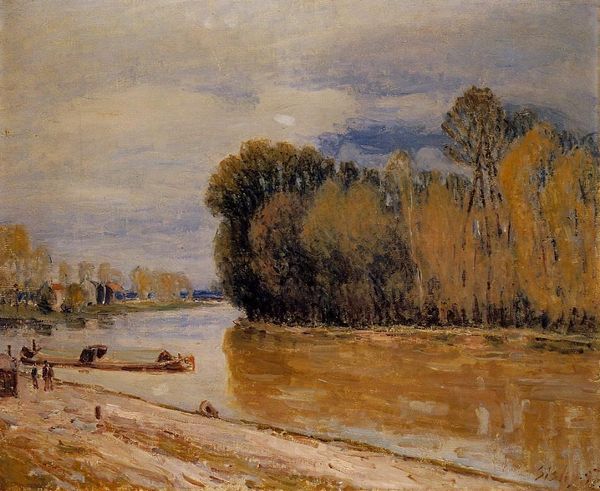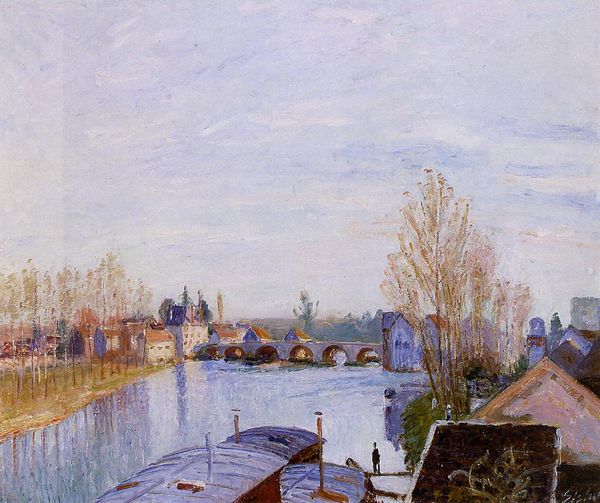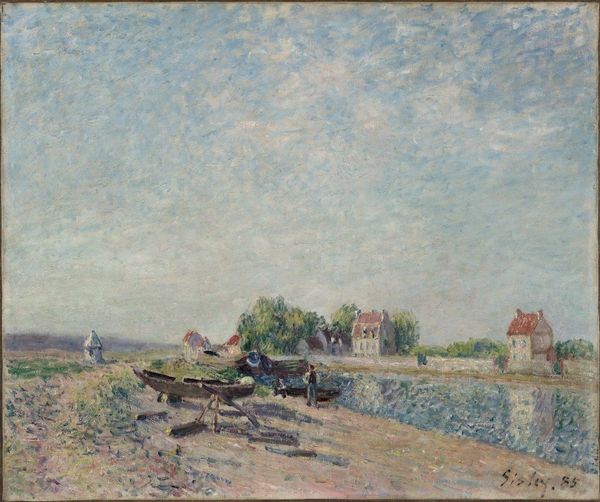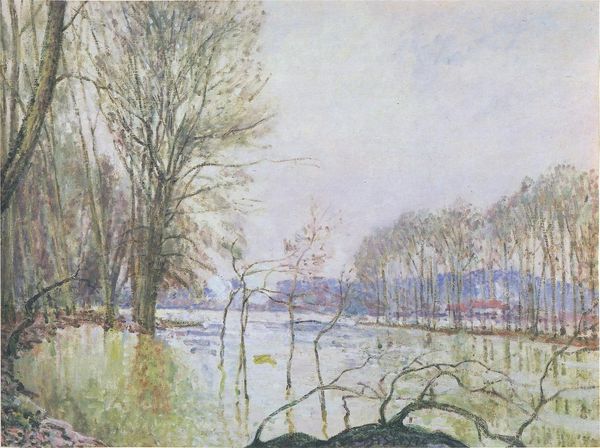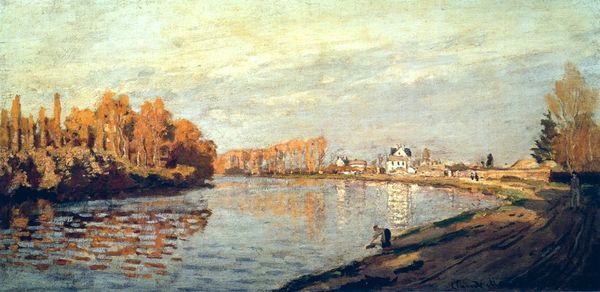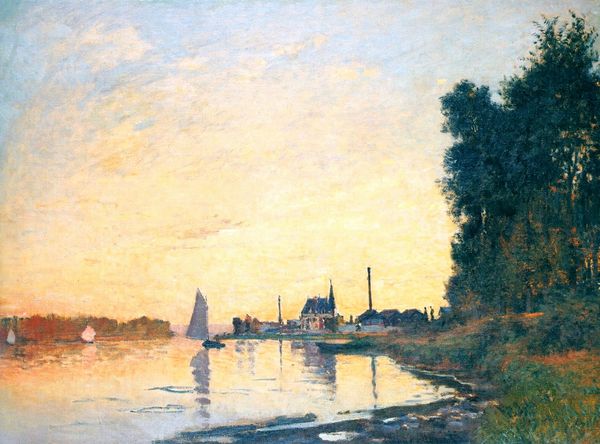
plein-air, oil-paint
#
impressionism
#
plein-air
#
oil-paint
#
landscape
#
impressionist landscape
#
oil painting
#
cityscape
Copyright: Public domain
Editor: Here we have Alfred Sisley's "The Seine at Suresnes," painted in 1880 with oil on canvas. It’s remarkably atmospheric, a hazy scene that almost feels muted, even with the suggestion of industrial activity. What's your interpretation? Curator: Well, it's easy to get lost in the aesthetic appeal, the play of light and color typical of Impressionism. But let’s consider the context. Sisley is painting during a period of intense industrial growth along the Seine. How does that impact the image, and our reading of it today? Editor: That's a good point. I was so focused on the 'impression' of the light I almost ignored the figures working along the shore. Curator: Exactly. The composition subtly hints at the socio-economic transformations of the time. Notice how the working-class figures are placed near industrial architecture; they’re literally grounded, where the landed gentry of the past might stroll. Sisley's choice is not apolitical. Who does the "Seine" belong to? What does it mean to paint a landscape marked by the very visible signs of labour? Editor: So it's not just about capturing a fleeting moment, but about capturing a changing society, with labour, capital and environment converging. Curator: Precisely. The “fleeting moment” carries the weight of history, labour struggles, and early industrialism. His soft brushstrokes belie a sharp commentary on the impact of progress on working people. This seemingly peaceful scene quietly showcases how the urban development altered landscapes of power. Editor: This has given me a completely different perspective. Thank you! I will never look at an impressionist painting the same way again. Curator: I'm glad! Looking at art through these intersectional lenses always reveals fascinating and important things.
Comments
No comments
Be the first to comment and join the conversation on the ultimate creative platform.
